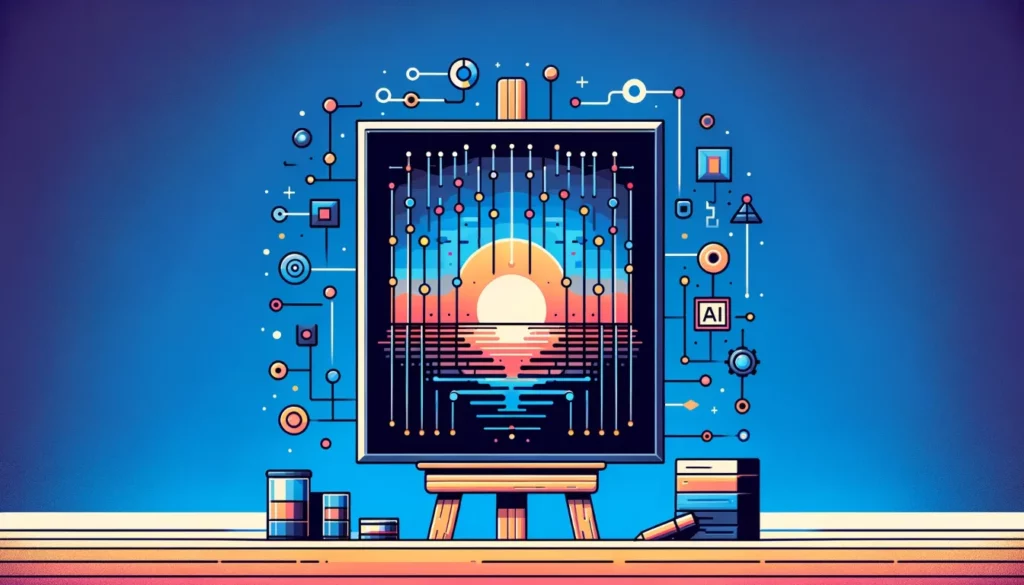What is Stable Diffusion?
Since you’ve landed on this page looking for prompting tips, it’s probably fair to assume that you know what Stable Diffusion is. However, for those that don’t, it is a powerful text-to-image AI model. It takes your written descriptions (prompts) and transforms them into unique and detailed images.
We wrote a post about the basics of Stable Diffusion recently actually. You can read it here if you’re wondering more about it.
Now let’s get to what this post is really about: how to prompt with Stable Diffusion!
The Basic Building Blocks of a Prompt
Here’s a breakdown of the key elements you’ll use to construct your prompts:
Core Subject
This is the main focus of your image. Be as specific as possible (e.g., “a majestic lion,” “vibrant cityscape,” “a cyberpunk robot”).
Style
This is how you want the image to look. I suggest using some well known styles, for example:
Art Movements: “cubist,” “impressionist,” “hyperrealistic,” “pop art”
Mediums: “oil painting,” “watercolor,” “pixel art,” “pencil sketch”
Artists: “in the style of Van Gogh,” “inspired by Salvador Dali”
Composition
This is how elements are to be arranged in the image:
- “close-up portrait”
- “wide-angle landscape”
- “macro photography”
Lighting
Lighting can be what makes the difference between a good image and a great image. Use lighting keywords to give your image that extra oomph it needs to shine. Some lighting keyword examples are:
- “dramatic lighting”
- “soft golden light”
- “neon glow”
- “volumetric lighting”
Color
Specify the coloring that you’d like that will match the overall theme your image is going for. It can be as simple as listing a color like red to have more reds come through in the final image or a little more detailed with describing words like:
- “pastel colors”
- “monochrome”
- “vintage color palette”
Details & Modifiers
Lastly, you can add extra nuances and refinements to your image using these keywords. Examples are things like textures, actions, more detailed visual aspects, and other things like that. Things such as the following:
- “wearing a crown”
- “surrounded by butterflies”
- “with intricate patterns”
Prompting Tips
Be Specific But Don’t Get Too Complex: The more detail you provide, the closer Stable Diffusion can get to realizing your vision, however, if you describe a scene with too many small details, Stable Diffusion will have trouble getting it all accurately in the image. Generative AI is impressive, but it still cannot get everything quite right, just yet.
Experiment with Weights: Use parentheses to emphasize certain words or phrases. For example: “A fluffy cat (with big green eyes) playing with a yarn ball.”
Negative Prompts: Add a negative prompt section to tell Stable Diffusion what you don’t want in your image (e.g., “blurry,” “low quality,” “distorted”).
Start Simple: Begin with short, basic prompts and then gradually add complexity. Finding good prompts and getting good at prompting is an iterative process.
Inspiration is Everywhere: Look at art, photographs, and other images as a springboard for your prompts. The more you see, the more ideas you’ll have.
Example Prompts
- Simple: “A photorealistic portrait of a woman with fiery red hair.”
- Detailed: “A vibrant oil painting of a bustling Tokyo street market at night, illuminated by neon signs and lanterns, in the style of Van Gogh.”
- Conceptual: “A dreamlike illustration of a lone astronaut floating amidst a field of stars, a sense of longing and wonder.”
Learning New Prompting Words By Deconstructing Other Images
Sometimes it helps to learn how to describe a new image better by expanding your vocabulary of good prompting keywords and styles.
You can do this by going to the img2img tab inside of Stable Diffusion (if you’re using a webui like Auto 1111) and using the “interrogate clip” feature. This will describe an image that you input and can give you inspiration for better keywords to describe your own prompts better.
The is also a Huggingface space set up for Clip Interrogator 2 which you can use in your browser at: https://huggingface.co/spaces/fffiloni/CLIP-Interrogator-2
Hi, I’m Carmine, the guy behind Helpful Tiger. Tired of crappy search results? Me too. That’s why I started this website. It’s a one-stop shop for simple tutorials and guides on a little bit of everything. Have questions? Reach out, and I’ll do my best to help!



